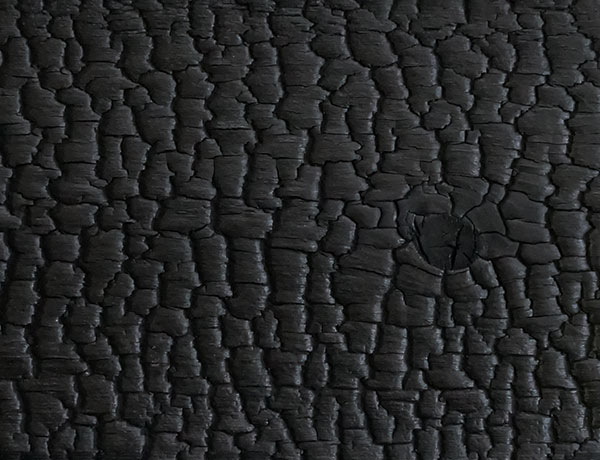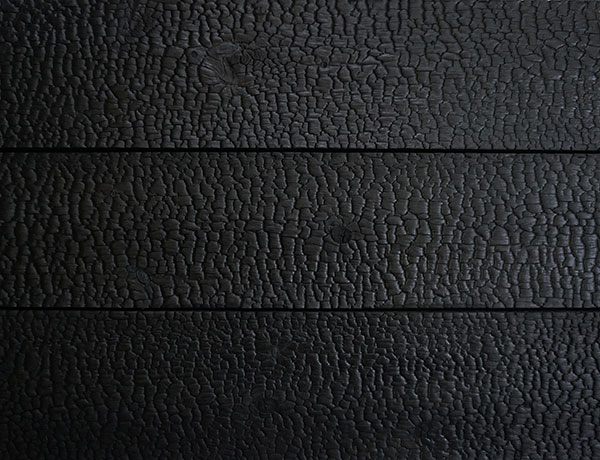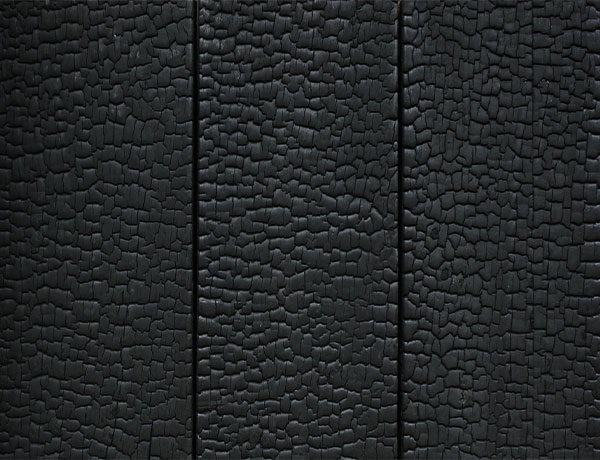


We char wood by following a traditional Japanese wood charring method Shou Sugi Ban, also known as Yakisugi, which gives the charred timber a unique texture, makes it resistant to harsh weather conditions and ensures it is durable over time.
We produce two types of burnt timber cladding:
For the finishing coat, we offer a special sealer and oils.
We provide shiplap, tongue and groove, and squared profiles.

Charred spruce is our most affordable product. The burnt timber is suitable for use in exteriors. We use high-quality Finnish spruce that is PEFC certified.




Charred larch is our most popular product with the best quality-price ratio. Burnt larch cladding is very durable and, therefore, it is perfectly suitable for exteriors.
Accoya is a premium choice; the charred layer is unique and beautiful. Charred Accoya has the best dimensional stability. There are no knots.





Charred Kebony Character is a premium wood known for its high quality and durability. The Kebony Character may contain knots and other natural characteristics.
Charred Kebony Clear is a premium choice. The charred layer is unique and beautiful. Charred Kebony has good dimensional stability. There are no knots.


At first, we char 2-3 mm of the timber cladding surface. Then, we brush the char away and coat it with special oil. Under the char layer, there is a strong surface with a unique texture.


Your country isn't listed? Contact us
Make an inquiryCharred timber cladding is weatherproof, and its surface does not change its colour over time. Also, the charred layer is resistant to mould, insects, water and even fire. In Japan, the Shou Sugi Ban technique for preserving wood was introduced hundreds of years ago.
The charred layer protects the timber and makes it more durable. Charred timber can last for over 50 years. However, in harsh weather conditions, the char layer needs reinforcement. We have the knowledge and skills to provide you with the best solution according to your needs.
Producing charred wood requires accuracy, both in the preparation process and in burning the wood. We always select and prepare the best material and measure the charring time precisely to ensure high-quality output.
Charred wood is a modern and sustainable solution for a variety of designs. It is unique and suitable for both exteriors and interiors. For exteriors, charred wood is mainly used for cladding, decking, and fencing.
We produce charred timber cladding by following a traditional Japanese method Shou Sugi Ban. We do not use gas or other fuels for charring timber. We use gas only for igniting a fire. Instead of wasting natural resources, we use advanced technology where the wood burns itself.
In cooperation with Tallinn University of Technology (TalTech), we have conducted research to prove the durability of the charred layer over time. In addition, we tested the charred wood to find the best finishing options for preserving the carbon layer without the surface becoming greasy.